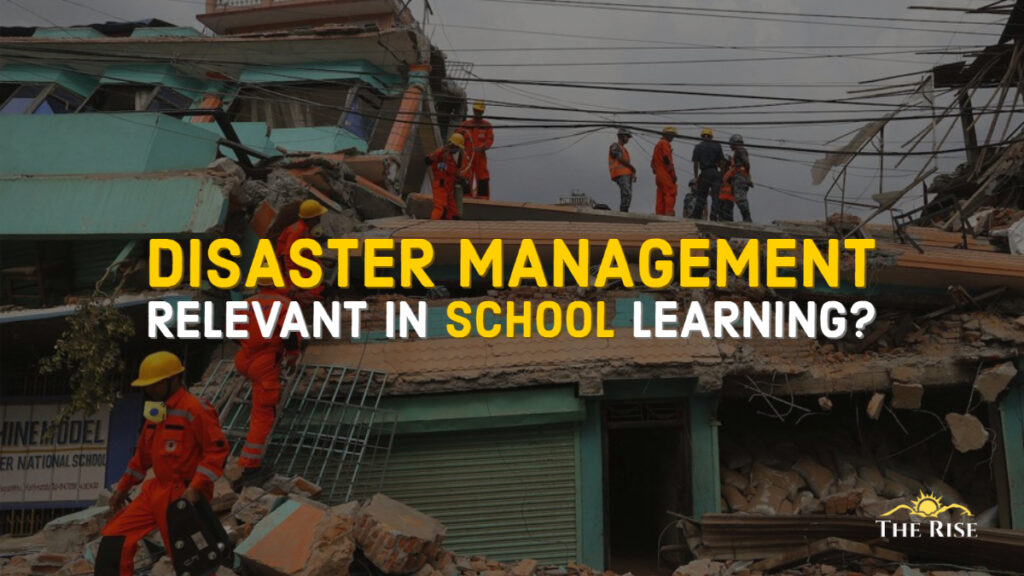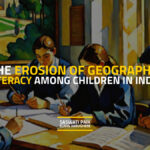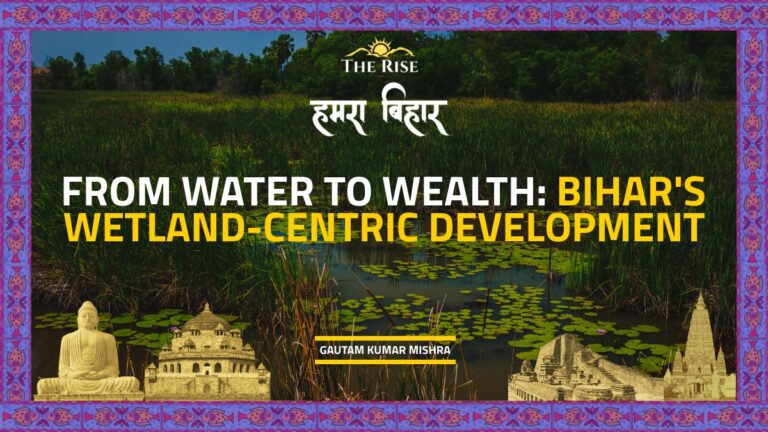The disasters happening around the world, especially in India, make it imperative to question ourselves on the importance of disaster management for the preparation of future generations of the country in having better and safer livelihoods. So, how can we incorporate disaster management for preparing people in schools?
Disasters are basically “disruptive and/or deadly and destructive outcomes of triggering agent(s); when they interact with and are exacerbated by various forms of vulnerability” (McEntire, 2001). Based on our experiences, we need to realize that there are different kinds of disasters affecting many of us currently, such as the heavy rains and floods happening in many parts of China and India, extreme heatwaves in parts of the USA and Canada, and even the COVID-19 pandemic ravaging the world, etc. Many of these disasters are not new to us and have been happening year after year. Still, why is it only when disasters happen that we decide to take the steps to protect ourselves and each other? Even then, many of us, including children, are not aware of the different disasters that happen around the world, the causes, the types as well as the steps that can be taken to protect each other as well as ourselves.
This is why a component such as Disaster Management should be included in the school curriculum. But whenever anything is to be included in the curriculum, it would just come in the form of a textbook or a chapter within the textbook, which would add to the existing burden for the children. Such a system is flawed, in the sense that it forces children to go through the process of rote learning and, finally, vomit it out at the time of exams. Certainly, textbooks and knowledge gained from them are necessary. But beyond that, learning should happen in the form of holistic disaster management learning. Holistic, in the sense that it should yield gaining knowledge, change in attitude, and building values. Holistic disaster management learning is required because we are one of the reasons for these disasters. The different negative actions and our ignorance affects the environment and finally, the vulnerable communities face the consequences for it.
Holistic disaster management learning is required because we are one of the reasons for these disasters.
So, how can we incorporate holistic disaster management learning in classrooms? We should begin with forging foundational knowledge in children. It is necessary to look at the history of different major disasters that have happened around the country. Also, it is necessary to build a cosmopolitan view within us all, where children understand the major disasters that have happened around the world and the connections within them. This, certainly, is no easy feat for a teacher to do; but this can happen when teachers take the role of researchers as well.
Along with knowledge, there has to be a shift in the attitude as well as the building of values and this can happen when children learn to empathize with those who were affected by the disasters. One simple way this can be done is by bringing in case studies of the challenges experienced by those communities and people who faced disasters. With this, there can be group discussions and classroom sharing as well. Another activity is to introduce role plays in the classroom, where children wear the shoes of those who were affected by disasters and act it out. These are just a few examples that teachers can use; but certainly, there are more. Teachers, who know the context, are the best judges to decide what style and activities are to be used in the classrooms. It is important to realize that the ultimate goal is to get prepared for avoiding the destruction caused by disasters.
Also Read: The Ignored Disaster of West Bengal – Bhagwangola II
Almost 85% of the Indian geographical area is vulnerable to one or more disasters. Thus, disaster management must be a priority in education.
In India, almost 85% of its geographical area is vulnerable to one or more disasters (Paik, 2018). If we know this, then why can’t there be any mitigation plan for reducing the disaster risks in the schools and homes in these areas? Mitigation means, “to reduce the immediate damage otherwise being caused by a destructive force on the society” (Sundnes & Birnbaum, 2003). It would be difficult to avoid these disasters but, the risk can certainly be reduced by engaging the specialists from the area of disaster reduction and avoidance to bring the subject to schools in different areas. This will help in preparing disaster mitigation plans for schooling systems and also preparing stakeholders for the steps they have to take. For preparing them, there can be workshops, classes or any other activity which can be taken up by these specialists.
It is surprising to note that learning Disaster Management is not considered a priority in the National Education Policy 2020. Including such a component, where school stakeholders know exactly what they need to prioritise in educating their students, is the need of the hour. Therefore, disaster management must be a priority in education. If this is not prioritised and proper measures are not taken, then the vulnerable communities would face various challenges, which in turn would affect the whole country.
You May Like: National Education Policy 2020: Issues and Implications
One of the implications of a disaster on affected communities is the increase in student dropouts. Post disasters, the livelihoods, the educational infrastructure, and homes are damaged and people, including children, go through mental trauma. When this occurs, it is not possible to think of education at that point of time (or even later) as the families prioritise their survival. Children also get into the state of mind of not going to attend schools. The disruption in the schooling process, causes them to drop out of school. This is where the preparation of children about disasters, as well as drafting personalized disaster mitigation plans, is necessary for the protection of their lives and livelihoods.
References
- McEntire, D. A. (2001). Triggering agents, vulnerabilities and disaster reduction: towards a holistic paradigm. Disaster Prevention and Management: An International Journal.
- Paik, S. (2018). Impact of natural disasters on schools in India: current scenario in terms of policies and practices. In Disaster Risk Governance in India and Cross Cutting Issues (pp. 295-312). Springer, Singapore.
- Sundnes, K. O., & Birnbaum, M. L. (2003). Health disaster management: Guidelines for evaluation and research in the Utstein style. Prehospital and Disaster Medicine, 17(Supplement 3).
Disclaimer: The views expressed in this article are of the author solely. TheRise.co.in neither endorses nor is responsible for them.
About the author
Elwin Varughese is an education professional with a Master of Education in Educational Leadership and Policy from the University of Toronto, and a Master of Arts in Education from Azim Premji University. His work focuses on areas including school leadership, social justice and Indigenous education. Currently, he is working as a Lab Associate in Geography Lab at Azim Premji University.








